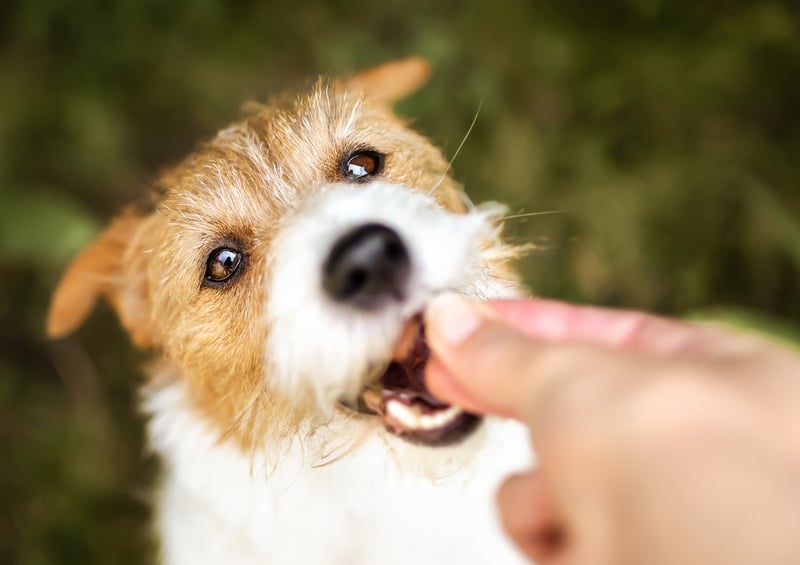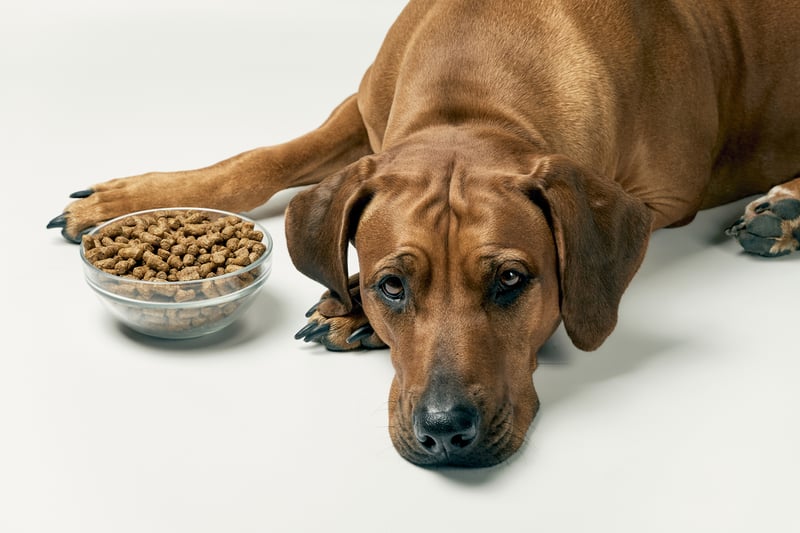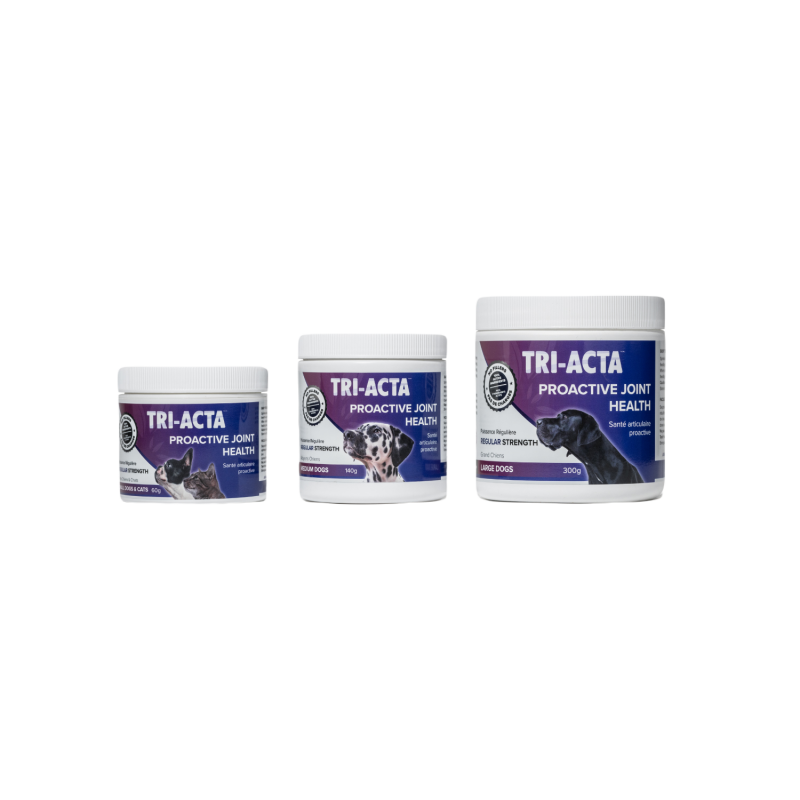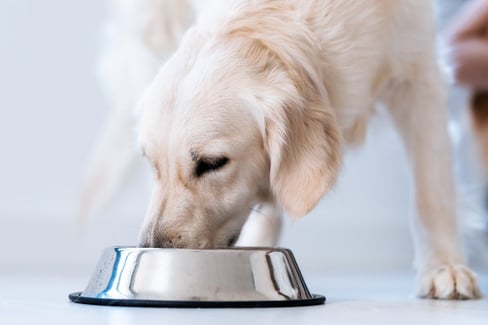Table of Contents
Dogs are known for wolfing down almost anything palatable that is put before them. So it can be confusing for pet parents to see their pooch turning their nose up on a bowl of food. Sometimes it’s more than just being picky; not eating can be a sign of a sick dog.
Whether it is a reduced appetite (hyporexia) or a complete loss of appetite (anorexia) a dog with no appetite is no fun. In fact, a loss of appetite is often an indicator of an underlying problem that will need to be investigated by your vet.
In this article, we discuss more on what to feed a sick dog with no appetite, plus we offer tips on home remedies and food you can give to your doggo to help entice them into eating.
What are the Reasons That Your Dog Has No Appetite?
There are several reasons that can lead to loss of appetite in dogs. These reasons can be divided into three categories:
- Behavioral changes
- Medical reasons
- Food-related problems
Behavioral Changes
Dogs are naturally sensitive to their environment and may prefer things in a certain way. A change in a dog’s surroundings or routine can trigger anxiety, fear, depression, or stress, causing them to not want to eat.
Some of the things that could be keeping your pooch away from their food bowl include:
- Moving to a new neighborhood
- Bringing new pets in the home
- Presence of new house members
- Traveling abroad
- The loss of a fur buddy
- Re-homing after the loss of a pet parent
- Absence of the pet parent or being under someone else’s care
- Being locked in a kennel
All these situations can trigger high-stress levels that can affect a dog’s hunger. Signs that your pooch may be stressed are outlined in the following table.
|
Behavioral Change |
Symptoms |
|
|
|
|
|
Medical Reasons
If your dog is unwell or has undergone a medical procedure, their appetite may be affected. A dog can lose appetite due to several medical reasons including:
- General illness
- Dental challenges
- Side effects of medications or vaccinations
General illness
A doggo who is feeling ‘meh’ may lose interest in eating. Dogs can easily detect when something is not right in their bodies, especially when they experience other accompanying symptoms such as vomiting or diarrhea. While a loss of appetite for a short period of time may not necessarily be a point of concern, if your dog is experiencing continuous symptoms and not wanting to eat, it’s time to take action.
In addition, if your canine buddy has suffered a front leg injury, they could have a difficult time getting to their food during meal times. A dog leg sprain is also a common injury that can inhibit motion and cause a loss of appetite.
A dog could also be experiencing pain due to conditions like dog arthritis. When a dog experiences pain while moving, it may opt to stay away from its food if it’s far away from where they prefer to rest. Moving the food closer to their preferred area is one short-term solution.
Giving your dog a good-quality joint supplement can do wonders in helping your dog overcome joint pain. TRI-ACTA H. A. for pets is an excellent supplement containing ingredients like MSM, glucosamine, chondroitin sulfate, and hyaluronic acid, which help maintain joint health. This supplement can be easily incorporated into your dog’s diet and is flavorless, so they won’t turn their nose up at it.
Glucosamine for dogs is incredibly therapeutic in addressing inflammation and promoting cartilage production. Hyaluronic acid helps maintain healthy synovial fluid, while chondroitin sulfate slows cartilage degeneration. MSM has potent anti-inflammatory properties, which help reduce pain and inflammation, promoting joint mobility.
TRI-ACTA H.A. for Pets
Our maximum strength formula is optimally designed to accelerate the formation of cartilage, minimize inflammation, expedite the healing process, and improve joint conditions.

Dental challenges
Dental disorders like gingivitis and periodontitis can cause pain and make it difficult for your dog to eat. It is also possible for dogs that have experienced some form of traumatic injury to the face and jawbone to shy away from their food, especially if it’s dry kibble. Symptoms of a dental problem may include:
- Bad breath
- pawing or constant rubbing of the face/mouth
- Bleeding from the gums
- Red swollen gums
- Reluctance to eat
Getting a dental problem solved quickly is the only sure way to help your pooch regain their ability to eat food. Puppies can also experience dental challenges when growing deciduous teeth which might affect their eating ability.
Side effects of medications or vaccinations
Your dog may also experience a loss of appetite due to the side effects of medication or recent vaccination. Every medication prescribed for treatment has side effects, including a temporary loss of appetite or an upset stomach.
Pet vaccinations also have side effects like lethargy and a loss of appetite. Though not all dogs are guaranteed to experience side effects, it is important to look for severe reactions that might need urgent vet care. The good news is vaccine side effects are often temporary, and your pooch should be back to its normal self within a few days or so.
Food-related Problems
Sometimes, your dog may refuse to eat not because of any medical or behavioral problems but because of the nature of the food itself.
Food that is Off
Dogs have a heightened sense of smell. So if their food has gone stale, is expired, or spoiled, they are most likely to reject it. Though some dogs may not be as sensitive to stale food, breeds like the Shih Tzu or Yorkshire terrier will likely turn their nose up at it.
You can do several things to ensure that your dog’s food retains its freshness and good taste:
|
Action |
How it Helps |
|
Store dog food in air-tight containers |
|
|
Serve fresh kibble/food at every meal time |
|
|
Check food expiry dates often |
|
|
Buy food in smaller quantities |
|
|
Serve small quantities of food depending on your pups’ appetite |
|
|
Cover leftover food and refrigerate wet food |
|
Finicky eaters
It is also possible for your doggo to get bored with their diet, especially if they are a finicky eater. If your pooch has been on the same type of food for a while and you notice that they are not as enthusiastic about meal times as before, it's time to change up. You can add variety to their diet and try to keep the foods interesting.
Finding the type of food that your picky eater might love might take some trial and error. Once you find a particular brand, try different versions to keep things interesting. It’s important to transition to a new food slowly, however, since a sudden change might make your pup feel sick.
Sudden change in food
Making sudden changes in the type and brand of food can cause stomach problems, especially if your pooch has a sensitive stomach. Sometimes this can lead to vomiting, upset stomach, or diarrhea. Ultimately a pooch with a bad tummy will have no desire to eat. However, this should not be long-lasting, particularly if you seek the intervention of your vet.
If the loss of appetite persists beyond several days, then your vet will make a more detailed assessment as it may be an indicator of a more serious underlying medical condition.
Too many treats
If your doggo has figured out that they can get treats often, especially as a way to encourage them to eat their food, they might avoid eating a full meal altogether.
Treats should be used sparingly and should make up only 10% of their daily calorie intake.
Restricted diet
While veterinary-prescribed diets are great for treating chronic conditions and ailments in dogs, they may not be the most palatable. Most dogs loathe prescription food. So if your pooch is on a veterinary diet, it might explain why they may be shunning their bowl at meal times. However, you can get creative to help them eat better:
- Try different brands, especially those with a money-back guarantee
- Warm their food by mixing in hot water with kibble and let it soak for a minute or so
- Try mixing different textures and flavors
- Give the food in small portions at first and keep trying to re-feed your fur baby often
- Use a product such as beef liver powder for dogs to make the meal more enticing
Home Remedies for Dog Appetite

It can be frustrating taking care of a dog with zero appetite. There are however some home remedies that you can try to help your pooch recover and feel better.
Supportive Care
A pup that has not eaten for two to three days will need supportive care. This involves syringe feeding your doggo and ensuring they get some nutrition into their system. In more severe cases, your vet might place a feeding tube or give fluids through intravenous therapy. This is important in replacing and restoring healthy electrolyte levels and rehydrating your dog.
In addition, your vet might also prescribe appetite-stimulating medication.
Refeeding
Once an ailing pup has been stabilized, your vet might suggest starting them on a bland diet first before transitioning back to a normal diet. Refeeding calls for small portions of food to be given frequently to help your pooch gradually get back into their normal eating routine.
Hydration
Dehydration can cause your pup to lose its appetite. It is, therefore, vital to ensure that your pup always has access to fresh, clean water. You can add liquid gut supplements into the water to help boost appetite and ease an upset stomach.
Change in Diet
You can motivate an ailing pup to eat by sprucing up its diet. Your vet might also prescribe a change in diet to help your pooch recover more quickly. Often a prescription diet or dog diet food is targeted at addressing an underlying medical condition that might be affecting the appetite of your dog.
Make Your Dog Comfortable
If your dog is recovering from an illness or he is immobile due to surgery or a limb problem, it is critical to keep them as comfortable as possible. This means that they have easy access to their space, food, and bathroom.
It also includes keeping them warm in a cozy and comfortable bed. In addition, you can offer little healthy organic dog treats to keep their spirit up.
Exercise
Keeping your doggo active is vital in helping them maintain a healthy lifestyle.take your pup out for a walk every now and then for as long as possible. Exercise helps improve your doggo’s physical and mental health. Exercise also helps improve the digestive and cardiovascular systems and build and strengthen muscles.
What to Feed a Dog With No Appetite

It can be challenging trying to figure out what to feed a sick dog with no appetite. One way to help ailing and recovering canines is by introducing a bland diet for dogs. A bland diet is a diet that is soft and easy to digest for your pooch.
When your doggo experiences vomiting, diarrhea, stomach upset, and has lost their appetite, it is best to pull their regular diet for a bland one. This will give their gut time to recover while still providing crucial nutritional value to facilitate the healing process.
Popular bland diets often consist of one protein and carbohydrate source. They help regulate stool formation while giving the gastric system time to rest and recover.
Chicken and White Rice
Chicken and rice are common ingredients in the majority of bland and normal dog foods. These are considered to be easily digestible and gentle on the stomach.
You can boil skinless, boneless chicken and mix it with white rice in a ratio of 1:2. That is one cup of chicken meat to two cups of plain boiled rice.
It is advised not to add spices, oil, or extra salt as it may upset your doggos’ already sensitive stomach.
Bone Broth
This liquid is made from boiling marrow bones—beef, turkey, chicken—in water for some time over low heat. Bone broth is a delicious meal that can help dogs with a low appetite because it sits easy for a pooch with a sensitive or upset tummy.
In addition, bone broth can make kibble more palatable by adding moisture and a meaty taste to it. Bone broth is also easy and convenient to make in big batches. You can make a large quantity and keep it in your freezer in portions depending on your dog’s size.
It’s important to remember that bones must be removed from the broth before serving to your dog. Sieve the broth once it cools to ensure you remove every bone piece that can harm your dog if eaten. Alternatively, you can buy ready-made broth as long it is unsalted and spice-free.
Chicken Breasts
Plain, boiled, shredded, and spice-free chicken breasts can be an excellent food alternative for an ailing pooch. Because chicken is naturally tasty for dogs, shredded chicken breasts can help motivate your pooch to eat.
In addition to being easily digestible, chicken contains essential minerals like magnesium, iron and potassium, vitamins, amino acids, and healthy fat that can help a recuperating doggo with no appetite.
You can also make shredded chicken breast in big batches and store it in your freezer. You could also buy ready-to-eat shredded chicken breast from reputable pet food brands.
Wet Dog Food
If your doggo’s lack of appetite is due to physical illness like dental challenges, wet dog food can be a great option. Because of its consistency, wet dog food is easy to lap up.
In addition, the smell of wet food can be appealing to a dog with no appetite. And if there are leftovers, you can always reheat them in the microwave. Wet or canned dog food is also convenient for pet parents who want to give their sickly furbabies a healthy boost of nutrition but do not have time to make home-cooked meals.
Baby Food
Because of the consistency and nutritional value of baby food, it is considered a good home remedy for dog loss of appetite. Baby food is formulated to support easy digestion and absorption for delicate baby tummies. It is also easy for dogs with mouth and jaw-related ailments to eat because baby food is often made into a smooth puree.
So if your pooch is ailing, has a failed appetite, and can't seem to keep much down, your vet might recommend trying out baby food.
Baby food is also easy to swallow, making it a convenient way to slip in your doggos’ medication without them noticing. Keep your dog away from baby food containing ingredients like onions and garlic, which are toxic to dogs.
Pumpkin
Pumpkin is a great source of fiber and nutrients, not just for humans but for dogs as well. The fiber in pumpkin can help a dog with diarrhea, especially canned pumpkin puree.
Compared to fresh pumpkin, canned pumpkin has a higher concentration of vitamins and fiber. This is because fresh pumpkin has more water content. Nonetheless, if fresh pumpkin is all you have, it can still help with your doggos’ upset tummy.
Another alternative is to use plain pumpkin powder, however, do not use pumpkin pie mix because it might contain xylitol which is poisonous for dogs. It is also recommended to avoid canned pumpkin puree containing spices or added salt, as these could further irritate your dog’s gut.
To prepare a pumpkin puree for your pup, peel, cut, de-seed, and boil the pumpkin until tender. You can puree it in a blender or food processor. Give small quantities of the pumpkin—about 2-3 spoons–and increase the quantity steadily as needed.
Sweet Potatoes
Sweet potatoes are a great treat for dogs. They pack some high-quality fiber and vitamins like beta-carotene which is an antioxidant for boosting the immune system. Sweet potatoes also contain essential minerals like manganese, B6, and potassium which are great for a sick doggo.
Remember that even though sweet potatoes are full of goodness for your pooch, only given a little at a time. You can bake, boil, steam, or dehydrate plain sweet potatoes. Avoid adding any seasonings or salt. A dog should only eat plain well cooked sweet potatoes so no additional butter, cream, or milk.
You can offer sweet potatoes as a treat, a single bland meal for your ailing pup or you can add it to dry kibble as a topper to enhance taste and texture.
Fish
If you are still stuck on what to feed a sick dog with no appetite, fish is a good option to try. Because fish has a natural odor that appeals to dogs and can motivate your pooch to eat, this is because smell plays a big role in a dog’s appetite.
Fish oil found in fish like cod can help boost your pup’s overall health and brain function.
Because fish is tender, easily palatable, and digestible, it can be a great option for dogs with a sensitive tummy. Dogs with mouth difficulties can also easily eat fish without much problem.
Remember to debone your fish and cook it through till it is well done. Serve only a small portion first. You can always pair it with veggies like pumpkin or serve it with plain boiled white rice as a bland meal.
Oatmeal
For pups without grain allergy, oatmeal is a great bland meal. Because it is high in fiber, vitamins, and minerals, oatmeal can help ease a queasy and upset tummy. In addition, it has benefits like keeping the coat and skin healthy, lowering cholesterol, boosting the immune system, helping the production of red blood cells, and recovery.
Remember to introduce oatmeal in small quantities. You can give about one spoon at the start. Also, only cook the oatmeal in water and not milk.
Summary
Keeping your furbaby well-fed and hydrated during illness is key to their recovery. However, that can be tough to do when you have to constantly wonder what to feed a sick dog with no appetite. A loss of or reduced appetite can slow the recovery process if your dog doesn't get the right nutrition.
Home remedies for dog appetite can be a lifesaver, especially for a dog that is losing weight due to lack of appetite. Offering a bland diet can help stimulate the appetite of a doggo. But remember to always loop in your vet before attempting to offer any kind of special diet or food to your furbaby.
Check out our resources for dogs, where you can learn ways to keep your pooch healthy and happy.
TRI-ACTA for Pets
A proactive approach for developing and younger adult pets to maintain optimal joint health mobility, minimize inflammation and fend off age-related ailments.

Newsletter Signup
Subscribe to our newsletter to receive the latest news and exclusive offers.
.jpg?height=2000&name=Cliick_Integricare-DISPLAY-REVISEDV2%20(1).jpg)
Proactive & Therapeutic Joint Supplements
When given daily, Integricare joint supplements recover bone and joint injuries faster and help prevent mobility injuries from happening in the first place.











